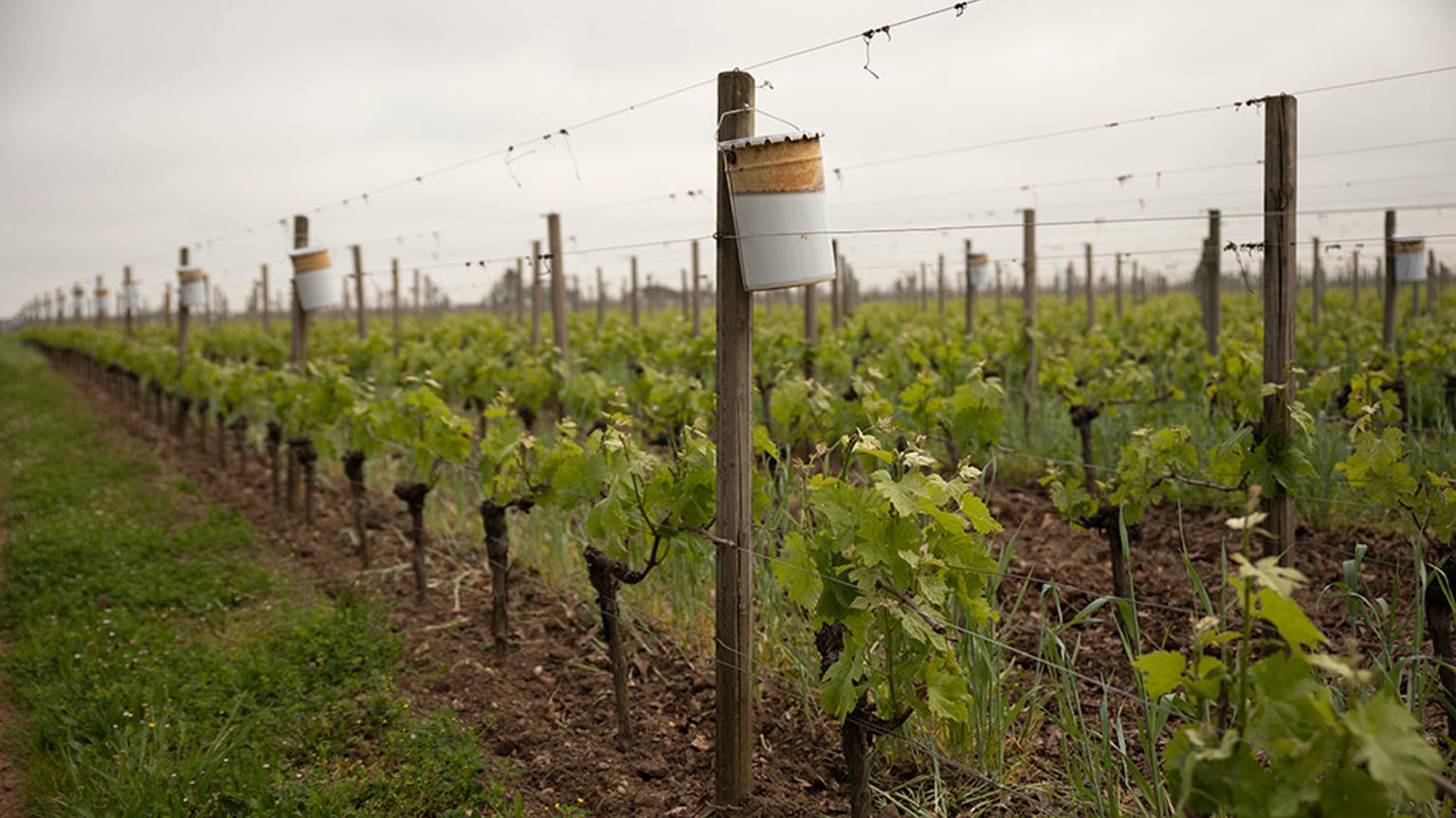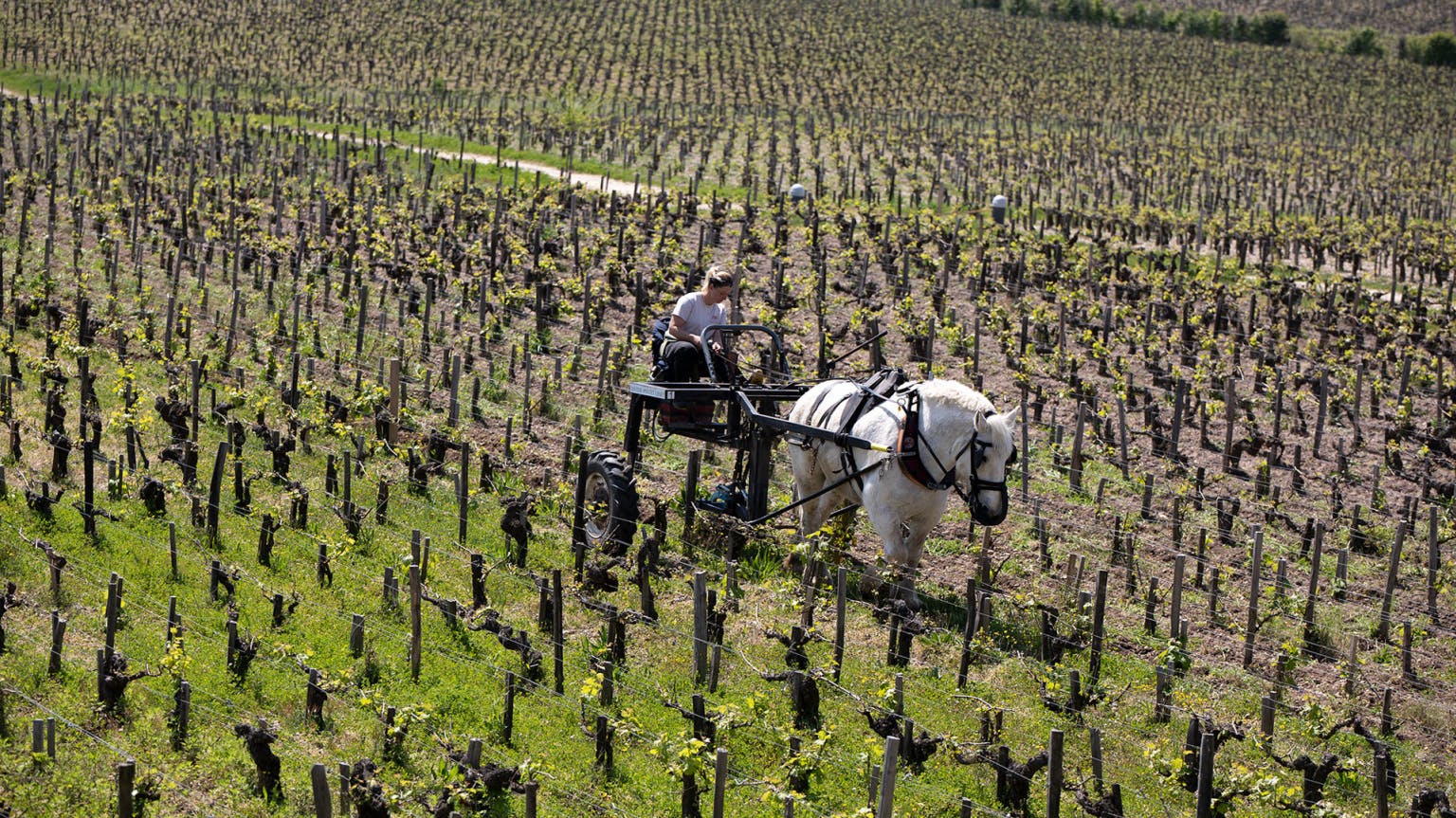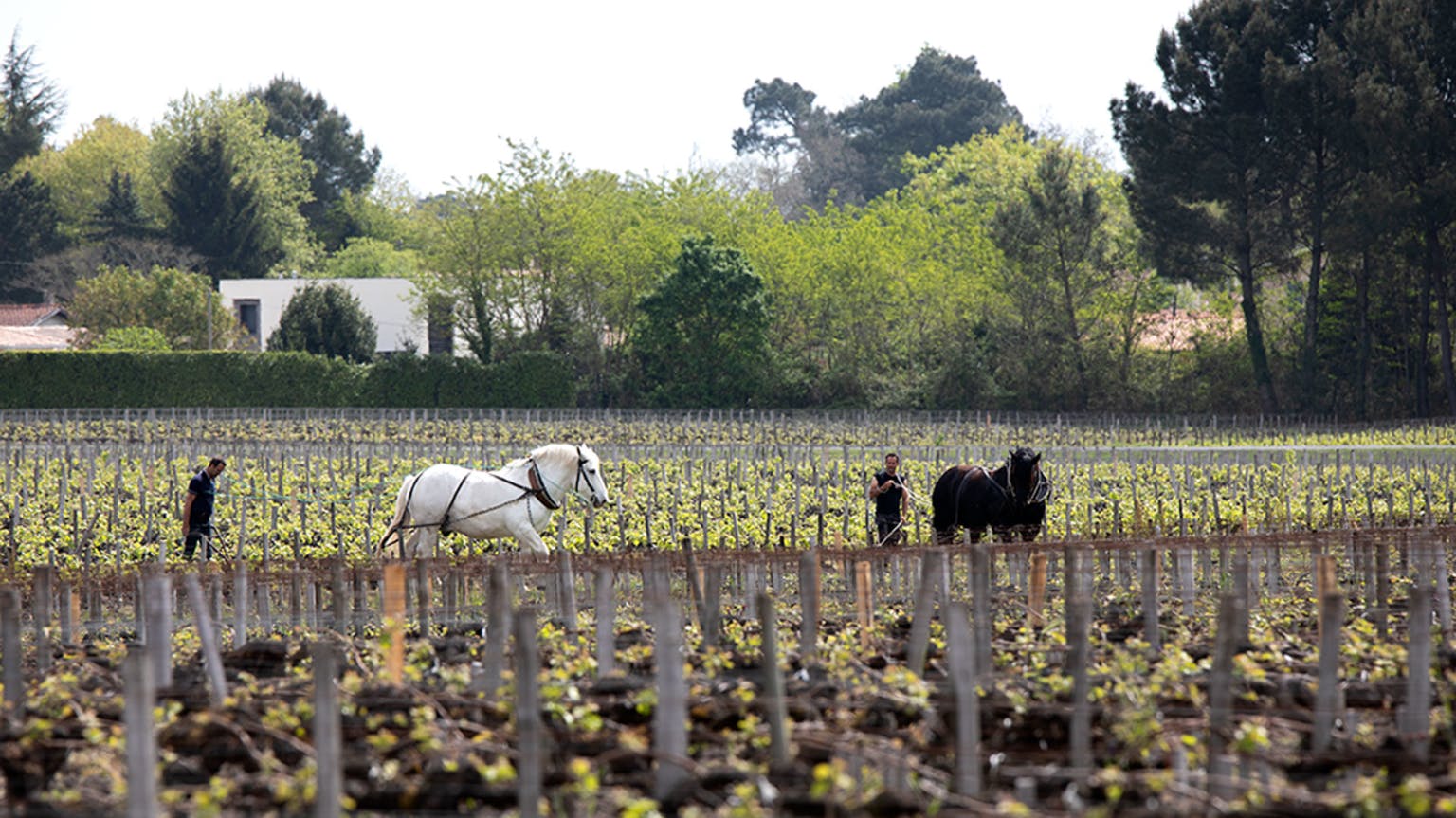The 2021 vintage in Bordeaux is not another 2018, 2019 or 2020. Indeed, this is a year that is seemingly without precedent. It was a year first and foremost of the wine-grower. Forget the idea that the best wines are made with minimal intervention, naturally conjured from fine terroir and effortlessly evolving in the cellar: that’s an illusion at the best of times. To succeed in 2021, producers had to put in serious graft. They needed to be out amongst the vines day in, day out. And then they needed to follow that through in the winery.
Several had already written off the year after hearing about the frost and mildew that plagued the growing season (about which you can read much more in our detailed report). In our view, that’s a mistake. It’s not the vintage of the century, and anyone would be foolish to pretend it is – but there are some brilliant wines, especially for those who are partial to more elegant styles, lower alcohol levels and freshness.
It’s important to caveat that when we discuss a vintage en primeur, we are talking about the very crème de la crème of Bordeaux – the finest estates who have not only the region’s best-sited vineyards, but the necessary resources – the manpower, money and equipment – to be able to succeed.
Our 10 days in the region revealed the full complexities of the year, one where it is nigh-on impossible to generalise. As Omri Ram at Ch. Lafleur told us, “There are hundreds and thousands of 2021s.” The key was being able to analyse what was happening in the vineyards – and then be able to act on it. Quickly. For Ram, with 24 people working 21 hectares, that was fortunately possible.
At Ch. Lafite Rothschild, Technical Director Eric Kohler told us that the cost of production in 2021 was an almost incredible 45% higher than normal. Christian Moueix estimates his team spent 30% more hours in the vineyard than normal. At Ch. Ducru-Beaucaillou, they hired an additional 35 people to manage mildew amongst the vines in June and July (surplus to the normal 40), while at both Ch. Rauzan-Ségla and Les Carmes Haut-Brion they had enormous teams for the harvest – 150 each, harvesting and sorting at Rauzan-Ségla, and doing three or four passes through each plot at Carmes. At Smith Haut-Lafitte, they bought five additional tractors to ensure they could spray the entire property in one day.
“All the challenges we could dream of happened,” said Jean-Basile Roland of Ch. Rauzan-Ségla. Because of these challenges, it’s a vintage that producers are justifiably proud of – for it was a hard-won battle, and Covid-19 was still a consideration.
Yields across the region varied significantly. In total, the region produced 14% less than in 2020, but some estates reported a full crop. At others, they had the lowest yields since 1991 – largely due to mildew, although frost was a factor as well. Inevitably, estates working organically and biodynamically had more of a battle when it came to mildew so were more significantly impacted. Both elements had less of an impact than might be expected, however, as producers have learnt – and invested – after the severe frosts of 2017 and mildew of 2018.
As already highlighted, this was a year of the grower; where the human hand was everything. There were key decisions to be made at every stage of the season and these influenced the style of wine produced. Again, from what we tasted there wasn’t a right or wrong decision to be made – but it’s important to emphasise the various elements that have defined the wines this year.

First up was picking. In general, harvest dates were much later than we’ve seen in recent years – producers having to wait for ripeness to arrive in the year’s cooler conditions. Merlot started coming in at the end of September, and most finished picking their Cabernet by 18th October. The key decision was around the first weekend in October, when heavy rain was forecast, yet most Cabernet wasn’t yet ripe. Some rushed to pick their fruit, while others took the risk and waited. Those who held their nerve were rewarded; the storms were replaced by sunny days for key ripening.
While recent years have seen producers waiting for phenolic ripeness, with sugar levels soaring in warm conditions, 2021 saw something different. At some estates, phenolic maturity arrived first, with the sugar never quite following; at others the phenolic, flavour and sugar ripeness all seemed to arrive at once. For the former, chaptalisation was necessary. This practice – the addition of sugar prior to fermentation to increase alcohol levels – was once the norm in marginal climates like Bordeaux, Burgundy, Champagne, the Loire and many more. Opinions on the topic are rife, with some winemakers extremely anti; from what we tasted, where well-judged and expertly managed, you can’t tell. There were a handful of wines with warming alcohol that doesn’t feel fully integrated, but where done well, chaptalisation has rounded the wine out – fleshing out the body with half a degree of alcohol or so. It’s also important to emphasise that chaptalisation is something we simply haven’t spoken about previously – at Ch. Margaux, Aurélien Valence highlighted that they even chaptalised a few parcels in 2019 and 2020, while some estates haven’t done so for decades. Some châteaux opted for reverse osmosis as an alternative way to concentrate the wines, generally on lower-tier wines.
Given the year’s challenging conditions, producers didn’t face a crop of flawlessly clean fruit. It was a cool and damp year and sorting was essential. Optical sorters are now the norm at many addresses, but this year saw the addition of density baths at several estates (Chx Léoville and Langoa Barton, Angélus and Smith Haut-Lafitte, to name a few, following in the footsteps of the likes of Ausone). Indeed, just at Smith Haut-Lafitte, there were six stages of sorting across the vineyard and winery to ensure that they kept only the finest fruit.
One point of discussion at almost every estate was how producers managed extraction. With the year’s wet conditions, berries were generally plump and dilution was a risk. The cooler weather also meant that tannins weren’t necessarily as ripe, although in terms of “IPT” (the Indice de Polyphénols Totaux – the level of tannins, a number that has started appearing on technical sheets and critic reports increasingly in recent vintages) 2021 had the same numbers as 2018, ’19 or ’20.
The difference, however, was that there isn’t the same stuffing to balance it – so it was essential that tannins were handled gently. Cold soaks were used at several addresses to extract colour and flavour, but not tannin; many opted for gentler and shorter maceration periods. Saignée – the act of bleeding off juice to concentrate what remains – was commonplace, and higher portions of press wine feature in several blends. Several producers noted that in particular the seeds or pips weren’t ripe this year, so it was important to avoid extracting tannins from them; it’s one reason for the significant portion (45%) of whole-bunch fermentation for the Grand Vin at Les Carmes Haut-Brion.
The blends this year are in some instances atypical. On the Left Bank, the Merlot struggled with coulure (uneven fruit-set), meaning some wines have record-high proportions of Cabernet Sauvignon in the blend (a record 98% at Ducru-Beaucaillou, 96% at Lafite, 90% at Calon-Ségur, for example). Cabernet Franc seemed to thrive on both sides of the Gironde, and represents higher-than-normal percentages on the Right Bank (30% at L’Evangile, 60% at Angélus). You may also find a little more Petit Verdot in blends than normal – used to add both colour and spicy richness to the wines (for example, representing 6% at Pontet-Canet).
Given the generally lighter style of the wines, élevage will be key. While of course this is not set yet, many producers have opted for lower levels of new oak and plan to leave the wines in barrel for slightly less time. As Noëmie Durantou Reilhac of Ch. l’Eglise-Clinet highlighted, this is to preserve the wines’ delicate tannins and aromas. At Ch. Rauzan-Ségla, Jean-Basile Roland noted that it was particularly important this year to use hot water and steam to extract the harshest tannins from barrels before they were filled.

And so what of the style of the actual wines? Well, as you can tell, it is not easy to generalise. This is not a Left or Right Bank year, in our view, although we found a little more consistency amongst estates on the Right (and especially warmer Pomerol). Despite the fact that Merlot struggled a little on the Left, it doesn’t seem to have been such an issue on the Right Bank – it’s neither a Cabernet or Merlot vintage. Several producers were quick to declare it a “terroir” vintage – and certainly it seems that limestone and clay soils were an advantage – but terroir was not the only element at play. It really is a year that needs to be judged individually, per estate and wine. We noted in particular that some second wines have suffered from the selection required to achieve greatness in the Grand Vin.
The best embraced the natural style of the vintage – working with the year’s elegance rather than battling it. There is an old-school charm to the finest wines, yet with a very modern fruit profile. “Modern classic” was a term that came up time and again, although we’re loathe to repeat it. At Vieux Château Certan, where Guillaume Thienpont has undoubtedly made one of the wines of the year, he described the wine as “two-thirds perfume, one-third flavour”, while Pierre-Olivier Clouet at Cheval Blanc – another overperformer this year – considers it “academic” rather than “classic”, built on dual pillars of tannin and acidity.
The best wines have fresh acidity, delicate and often floral aromatics, with crunchy fruit – often more at the red end of the spectrum. Alcohols tend to sit between 12 and 13% (a little higher on the Right Bank) and the tannins are not negligible, often providing a chalky grip, and they are surprisingly approachable now. They won’t be wines to cellar for the serious long-term, but will be one of those vintages to consistently overperform – surprising blind tasters with their charm as they evolve in bottle.
Given all this, it’s no surprise that producers struggled to find a comparative vintage. Faced with such tricky conditions just a decade ago, producers wouldn’t have been able to make the wines they did today. The 1990s were consistently used as a reference point in style, but more recently 2001, 2008 or possibly 2014 offer the best comparison in terms of style – if not climatic conditions. The wines are more concentrated than 2017, and as is very clear, drastically different to 2018, ’19 or ’20.
The vast majority of what we offer en primeur is red, and that is where the focus of our report lies, but this was an exceptional vintage for whites. Several estates feel they’ve made the best wines in their history – and certainly from our tastings that is true. At Ch. Margaux, Aurélien Valence said they thought 2017 was their best Pavillon Blanc, but 2021 exceeds it. The cool conditions that made the year challenging for reds was perfect for the white grapes, which benefitted from the long, slow growing season – offering aromatic ripeness, yet vibrant acidity. They really are superb. Crops in Sauternes were decimated by frost unfortunately (Ch. Suduiraut has just 500 cases of its Grand Vin to offer the world), but what little we tasted was similarly outstanding. Buy what you can of these increasingly rare and special wines, made at almost illogical expense.
Bordeaux 2021: the vintage in summary
A complicated year, but with some brilliant wines
In places, frost and mildew means yields are down by as much as 50%
Producers needed the resources to handle everything nature threw at them
For reds, quality is not homogenous, but the best are vibrant and crunchy, with lower alcohols, chalky tannins and pretty aromatics
Very hard to compare to other vintages, but 2001, 2008 and 2014 are the closest in style
An exceptional vintage for dry whites, and tiny volumes of excellent sweet whites

